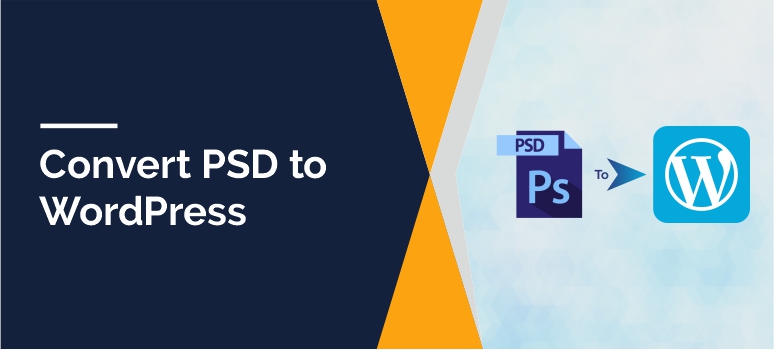How to convert PSD to WordPress Theme Using Bootstrap (7 Easy steps)

WordPress has become the most popular content management system (CMS). Almost 33% of websites use WordPress nowadays. It was started as a blogging platform initially but has now emerged as the first CMS choice for both blogging and eCommerce websites.
There are more than 55 thousand plugins and thousands of themes available to easily design your websites. But in this competitive world, you need a custom responsive website to attract users. The best way to do this easily is by converting Photoshop Documents (PSD) directly to WordPress. If you are not familiar with what PSD to WordPress conversion is and how you can do it, then you are at the right place.
Let’s discuss how you can convert PSD to WordPress using Bootstrap in 7 easy steps.
What is PSD to WordPress?
PSD is the default file format for files developed in Adobe PhotoShop. Most designers use this file format as it is easy to use and has better quality. PSD to WordPress conversion refers to the process of converting Photoshop document (PSD) files to responsive WordPress themes using HTML, CSS, PHP, and JavaScript. You can also perform a similar function by using Bootstrap or other frameworks.
Steps for PSD to WordPress conversion
There are 7 steps that you need to follow to convert PSD to WordPress using the Bootstrap framework. They are as follows:
Analysis of the PhotoShop document
Planning is the most integral part of every development. You can easily avoid future problems with advanced planning. Initially, just scan through your whole PSD file and look for the difficulties that you might face. Moreover, make a clear plan that you will follow for conversion. It is advisable to define every step and understand the whole procedure clearly. Once you have analysed your PSD file, go to the second step of slicing your PSD files.
Slice PSD file
The term “slicing” in PSD to WordPress conversion refers to dividing a single image file into multiple image files. It is an important step as the whole theme cannot be generated from a single image file. After slicing, every single image consists of a design element. These sliced images are eventually rearranged and combined to form the required design. This process is also called splicing due to the slicing of the image in the first part and the integration of images in the latter part.
Your theme should be bootstrapped
Bootstrap is mainly used to make your WordPress design responsive. A responsive website refers to a website that adjusts itself as per the screen size and orientation of the device. You can easily use the same website on desktops, laptops, mobile phones, or tables by using the Bootstrap framework. Just go to the official website of Bootstrap (https://getbootstrap.com/) and download the latest version of Twitter Bootstrap. Now just unzip the downloaded bootstrap file into the folder for further use.
Design the code
Using HTML, CSS, and JavaScript after downloading the Bootstrap framework, you will create your design and structure. There are two files you need to make: an index page and a style sheet. HTML5 should be used to build the structure, and CSS3 should be used to style that structure. Include the Bootstrap initialization in the index.html head section and the JavaScript initialization in the body section.
In index.html, create the WordPress Theme Structure
The primary reason for converting PSD to WordPress is to create a theme that can be uploaded to the website dashboard. But if you need to include your files in the dashboard, you need to validate them as a WordPress theme. Themes like Divi and Avada have some standard sets of files. You have to follow this file structure to consider your theme a valid WP theme. You will have to break down the index.html file into multiple PHP files according to the file structure of WordPress.
Final Testing
Once you have converted your PSD to WordPress, you will have to do the unit testing. You need to fix any errors in HTML, CSS, JavaScript, PHP, and WordPress. Make sure that your theme meets all the required standards that are defined by the W3C. You also need to test the responsiveness, performance, and compatibility of your theme. After successful testing of your theme, you can activate it via the dashboard.
Additional functionalities
If your theme has successfully passed all the required tests, then you can launch your WordPress theme. But before launching, you will also need to add some extra functionalities based on your requirements. You can add these functionalities to create a better solution to your problem. Once all the above steps are completed, you can easily launch your WordPress theme.
Also read: How To Select PSD To WordPress Conversion Service Provider?
Conclusion
The best way to create a responsive custom website is by converting PSD to WordPress and using Bootstrap. Bootstrap is only used to perform the primary function of making the website responsive and adaptable to different screen sizes. You need to have some basic knowledge of HTML and CSS skills to create the structure and style of your theme. Once you have successfully performed the unit tests of your theme and checked the responsiveness and stability of the theme, you can launch your custom WordPress theme.
Want to learn more about WordPress? Start here.